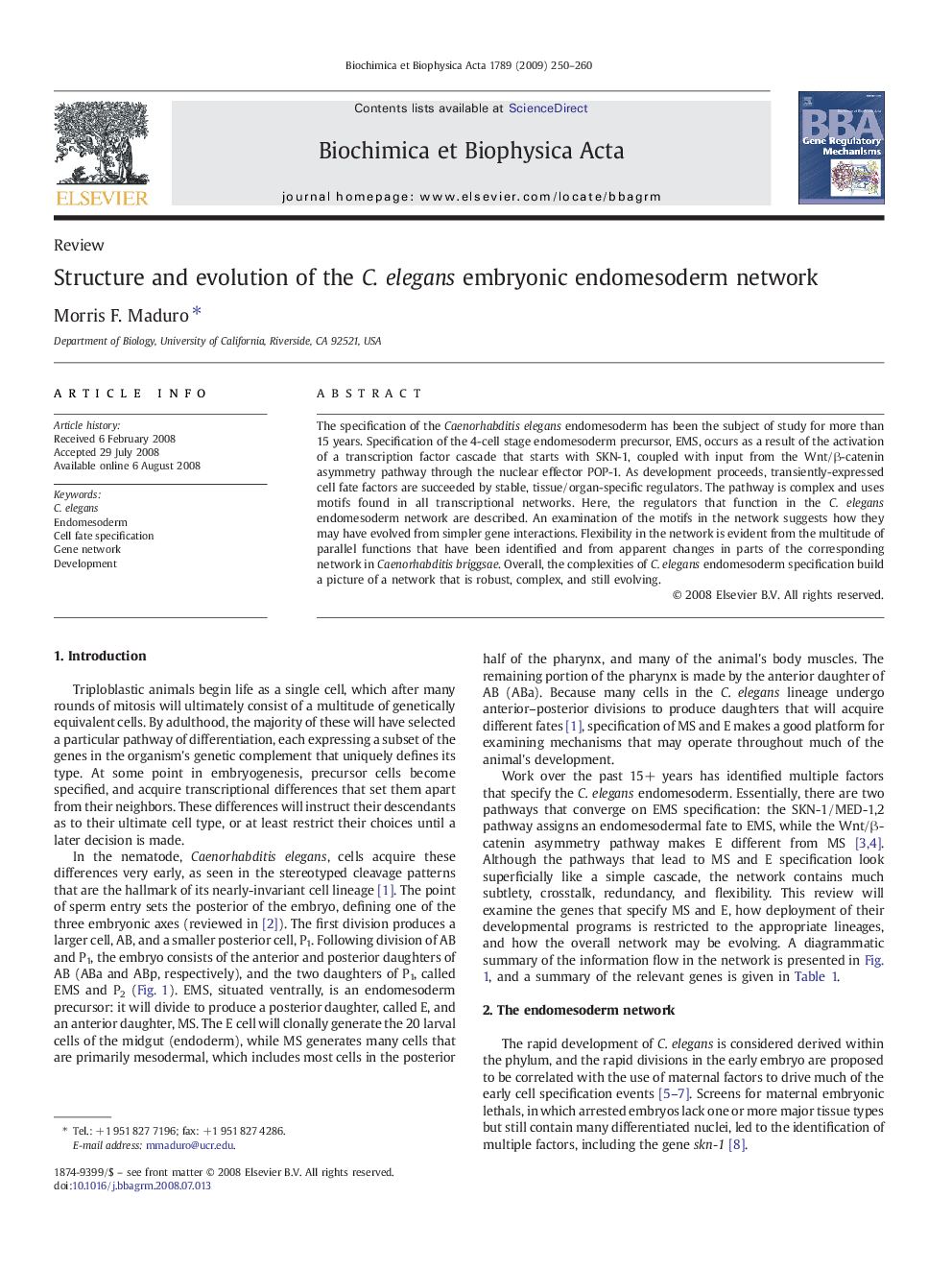| Article ID | Journal | Published Year | Pages | File Type |
|---|---|---|---|---|
| 1946931 | Biochimica et Biophysica Acta (BBA) - Gene Regulatory Mechanisms | 2009 | 11 Pages |
The specification of the Caenorhabditis elegans endomesoderm has been the subject of study for more than 15 years. Specification of the 4-cell stage endomesoderm precursor, EMS, occurs as a result of the activation of a transcription factor cascade that starts with SKN-1, coupled with input from the Wnt/β-catenin asymmetry pathway through the nuclear effector POP-1. As development proceeds, transiently-expressed cell fate factors are succeeded by stable, tissue/organ-specific regulators. The pathway is complex and uses motifs found in all transcriptional networks. Here, the regulators that function in the C. elegans endomesoderm network are described. An examination of the motifs in the network suggests how they may have evolved from simpler gene interactions. Flexibility in the network is evident from the multitude of parallel functions that have been identified and from apparent changes in parts of the corresponding network in Caenorhabditis briggsae. Overall, the complexities of C. elegans endomesoderm specification build a picture of a network that is robust, complex, and still evolving.
